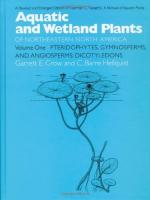|
This section contains 2,251 words (approx. 8 pages at 300 words per page) |

|
Gymnosperms are seed plants that do not produce flowers. The term gymnosperm means "naked seed." However, usually when the seeds of gymnosperms are immature they are enclosed within and protected by modified leaves or a cone. In flowering plants (or angiosperms, which means "vessel seed") the ovary wall or fruit encloses the seeds, whereas in gymnosperms there is no equivalent structure; hence, the interpretation of the seeds as "naked" or not enclosed.
There are four groups of gymnosperms living today—Coniferophyta, Cycadophyta, Ginkgophyta, and Gnetophyta—but many additional groups are known from the fossil record. Seed plants evolved more than 350 million years ago and the first seed plants were gymnosperms. The relationship of the flowering plants to the gymnospermous seed plants remains a hotly contested issue within the scientific community.
Although each group of gymnosperms has its own specific characteristics, some features are shared throughout. For example, all...
|
This section contains 2,251 words (approx. 8 pages at 300 words per page) |

|


